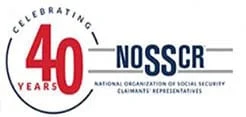Many researchers interested in the process for obtaining Social Security Disability Insurance (SSDI) benefits have studied the process to determine the likelihood of success of the initial claim. These researchers have universally concluded that over 90% of initial SSDI benefit applications are denied. In these cases, the claimant must look to the SSDI appeals process to recover benefits. Fortunately, the SSA regulations contain an extensive appeal process that, if followed to its end, can often reverse the initial denial of benefits.
Step One: Reconsideration
The SSDI appeals process begins with a request for reconsideration. If the SSDI claim was denied for medical reasons, the applicant can ask for reconsideration of that decision. The applicant’s file will be completely reviewed by a person who did not take part in making the initial decision. The applicant can submit any new evidence that may be relevant. A request for reconsideration can also be requested if the application was denied for non-medical reasons. Both types of request can be made on-line.
Step Two: Hearing by an administrative law judge
If a request for reconsideration is denied, the applicant can then request a hearing before an administrative law judge (ALJ). The hearing is usually scheduled for a place within 75 miles of the applicant’s home. The hearing may also be conducted via video teleconferencing. An applicant is allowed to have his or her legal representative attend the hearing and cross-examine witnesses.
Step Three: Review by the Appeals Council
The Appeals Council is the highest level of appeal within the Social Security Administration. The council reviews all requests, but it may deny the review if it finds that the decision of the ALJ follows applicable social security law and regulations. The Appeals Council can reverse the decision of the ALJ or return the case to the ALJ for further proceedings.
Step Four: Federal Court review
An adverse decision by the Appeals Council can be reviewed by a federal district court having jurisdiction over the residency of the claimant. Federal Court review must be commenced in accordance with the Federal Rules of Civil Procedure. While the federal district courts occasionally allow parties to appear on their own behalf, most claimants will be required to retain an attorney to commence the action and appear in court on the claimant’s behalf. An adverse decision by a federal district court can be appealed to the United States Court of Appeals having jurisdiction over cases in federal court.
A knowledgeable disability attorney can assist the claimant in preparing for reconsideration and for the other steps in the process.




